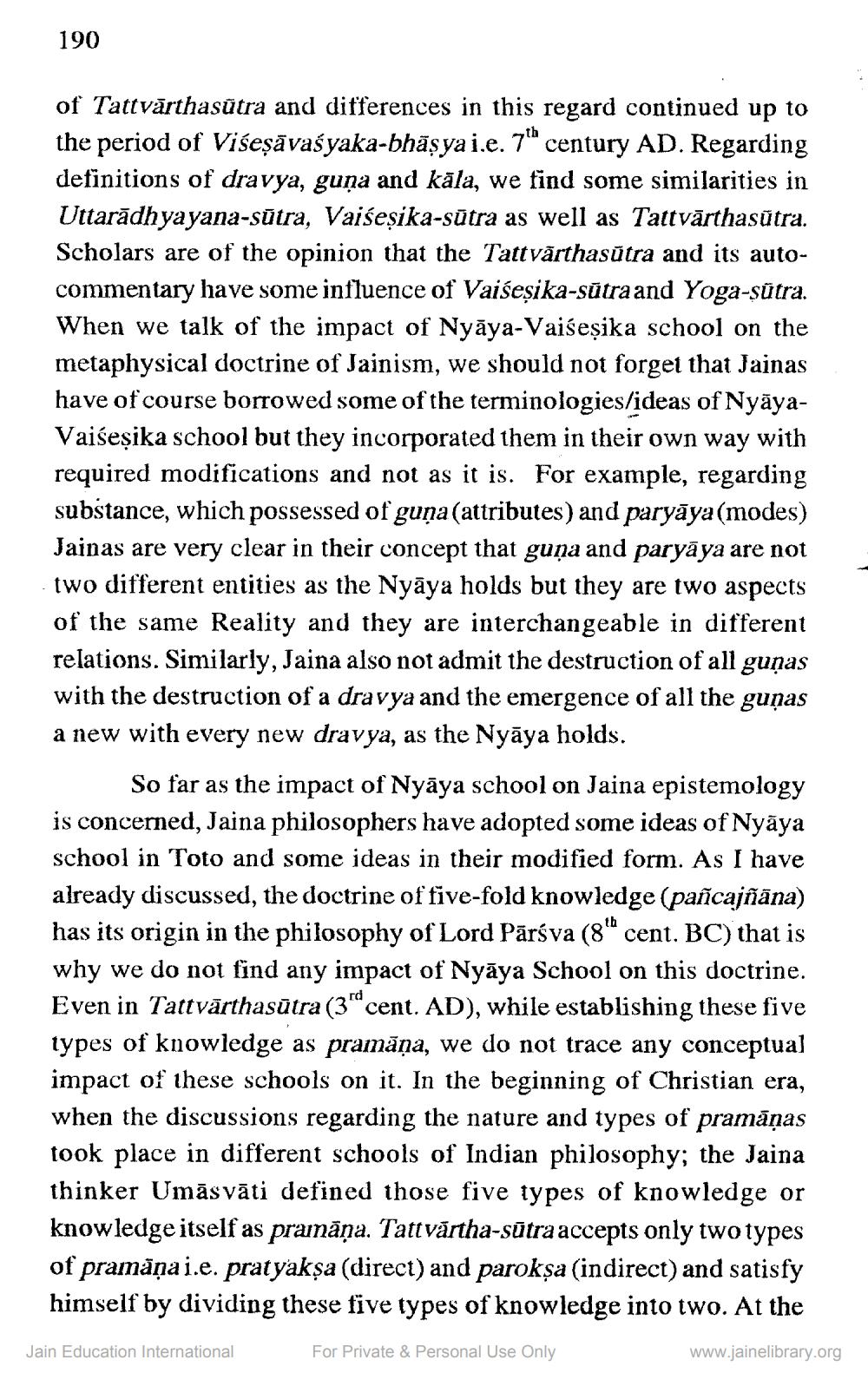________________
190
of Tattvārthasūtra and differences in this regard continued up to the period of Viseșāvasyaka-bhāsyai.e. 7" century AD. Regarding definitions of dravya, guna and kāla, we find some similarities in Uttarādhyayana-sūtra, Vaiseșika-sūtra as well as Tattvārthasūtra. Scholars are of the opinion that the Tattvārthasūtra and its autocommentary have some influence of Vaiśeşika-sútra and Yoga-sútra. When we talk of the impact of Nyāya-Vaiseșika school on the metaphysical doctrine of Jainism, we should not forget that Jainas have of course borrowed some of the terminologies/ideas of NyāyaVaiseșika school but they incorporated them in their own way with required modifications and not as it is. For example, regarding substance, which possessed of guņa (attributes) and paryāya(modes) Jainas are very clear in their concept that guņa and paryāya are not two different entities as the Nyāya holds but they are two aspects of the same Reality and they are interchangeable in different relations. Similarly, Jaina also not admit the destruction of all guņas with the destruction of a dravya and the emergence of all the guņas a new with every new dravya, as the Nyāya holds.
So far as the impact of Nyāya school on Jaina epistemology is concerned, Jaina philosophers have adopted some ideas of Nyāya school in Toto and some ideas in their modified form. As I have already discussed, the doctrine of five-fold knowledge (pañcajñāna) has its origin in the philosophy of Lord Pārýva (8 cent. BC) that is why we do not find any impact of Nyāya School on this doctrine. Even in Tattvārthasūtra (3"cent. AD), while establishing these five types of knowledge as pramāņa, we do not trace any conceptual impact of these schools on it. In the beginning of Christian era, when the discussions regarding the nature and types of pramāņas took place in different schools of Indian philosophy; the Jaina thinker Umāsvāti defined those five types of knowledge or knowledge itself as praināņa. Tattvārtha-sūtra accepts only two types of pramāņai.e. pratyakșa (direct) and paroksa (indirect) and satisfy himself by dividing these five types of knowledge into two. At the
Jain Education International
For Private & Personal Use Only
www.jainelibrary.org




